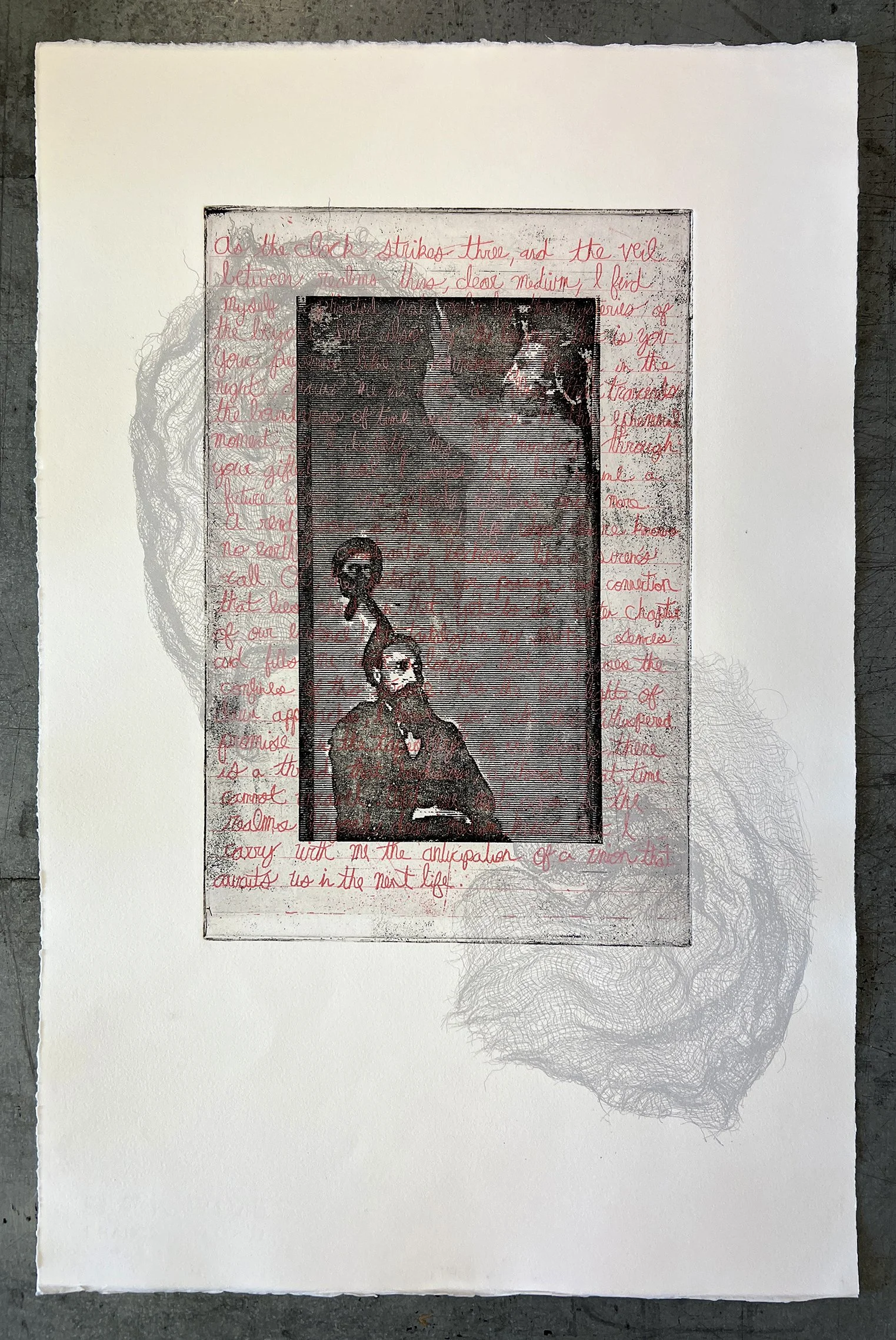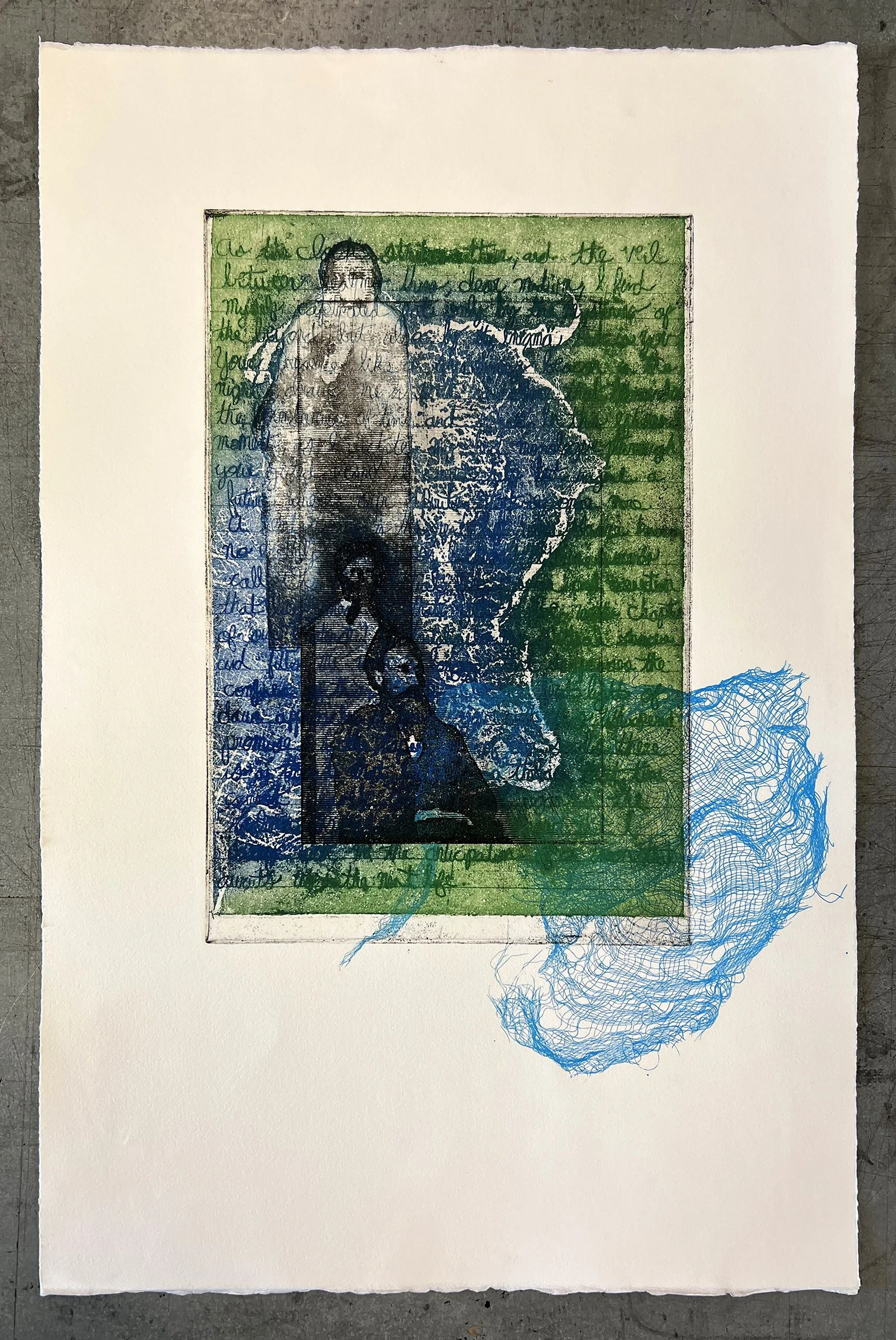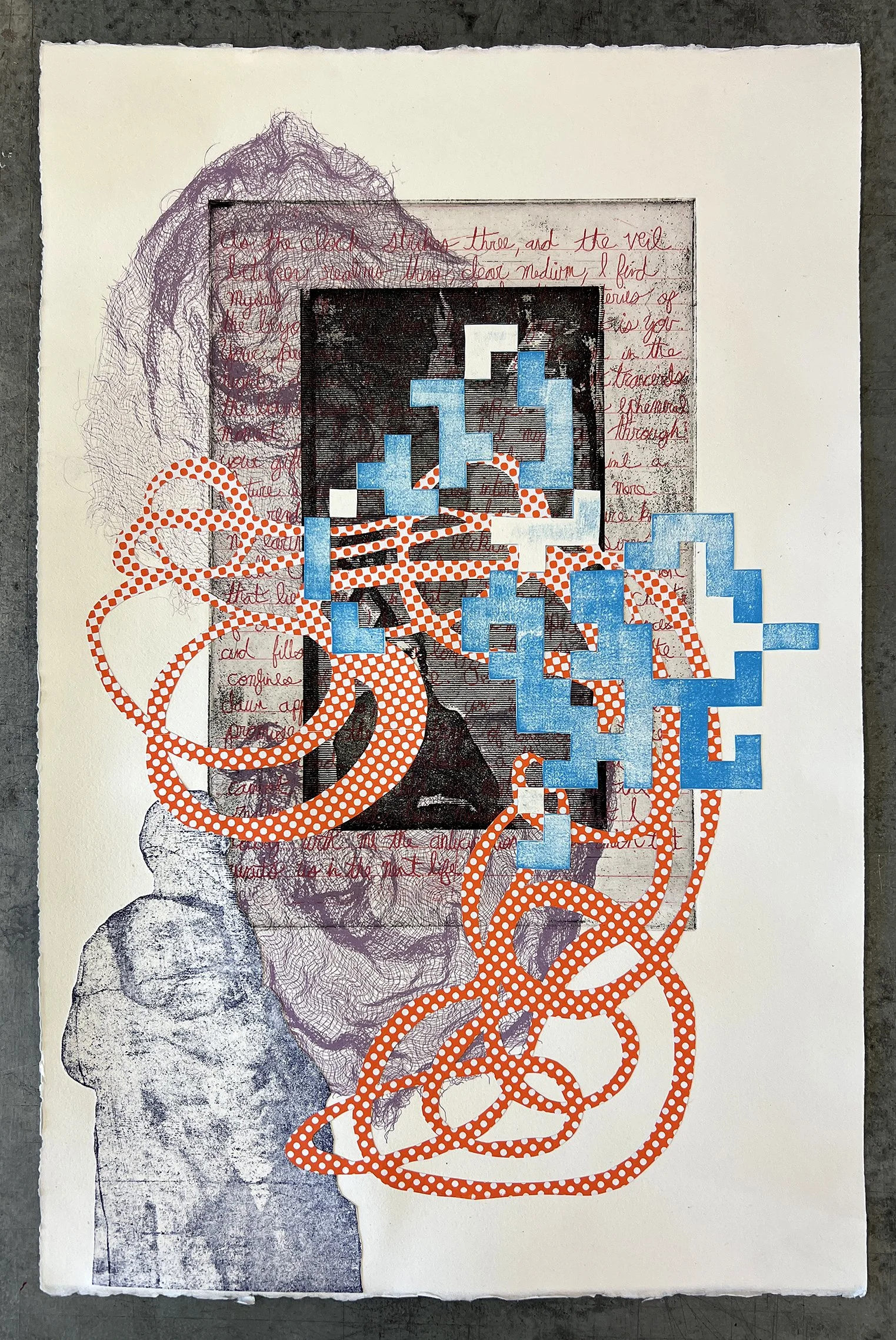becoming the robot
Changes in technology have long been a source of anxiety for artists. Upon first seeing a photograph around 1840, French painter Paul Delaroche allegedly decried “[f]rom today, painting is dead!” I have recently begun to question our relationship to the term “technology” — a term that is often used solely to describe digital technologies (social media, artificial intelligence, and so on,) but also incorporates more esoteric concepts (language, art, agriculture, etc.) This project combines centuries-old technologies of print media, paper, and clay, with electronic media and facsimiles to explore how our relationship to technology is deeper than popular discourse implies. Through material manipulation I replicate algorithms and machine learning — I am becoming what I fear in order to understand it better.
ghosts in the machine
Similar to the anxiety created by the invention of photography, current artists face existential threats with generative artificial intelligence. These are an ongoing suite of etchings combining low-quality AI generated text and imagery with traditional intaglio techniques. Rather than using large language models or image generators like Midjourney or DALL-E, I use generators like predictive text and the clone stamp tool that have long been embedded in the human experience. Infamous photographer William H. Mumler’s spirit photographs are the basis for the imagery, becoming more complicated through imagery and process through each iterative generation. I’m thinking a lot about labor; the labor to physically scrape the metal to make way for new imagery, the labor Mumler exerted to fool his patrons, the labor of data scientists trying to understand the machine learning they designed.









